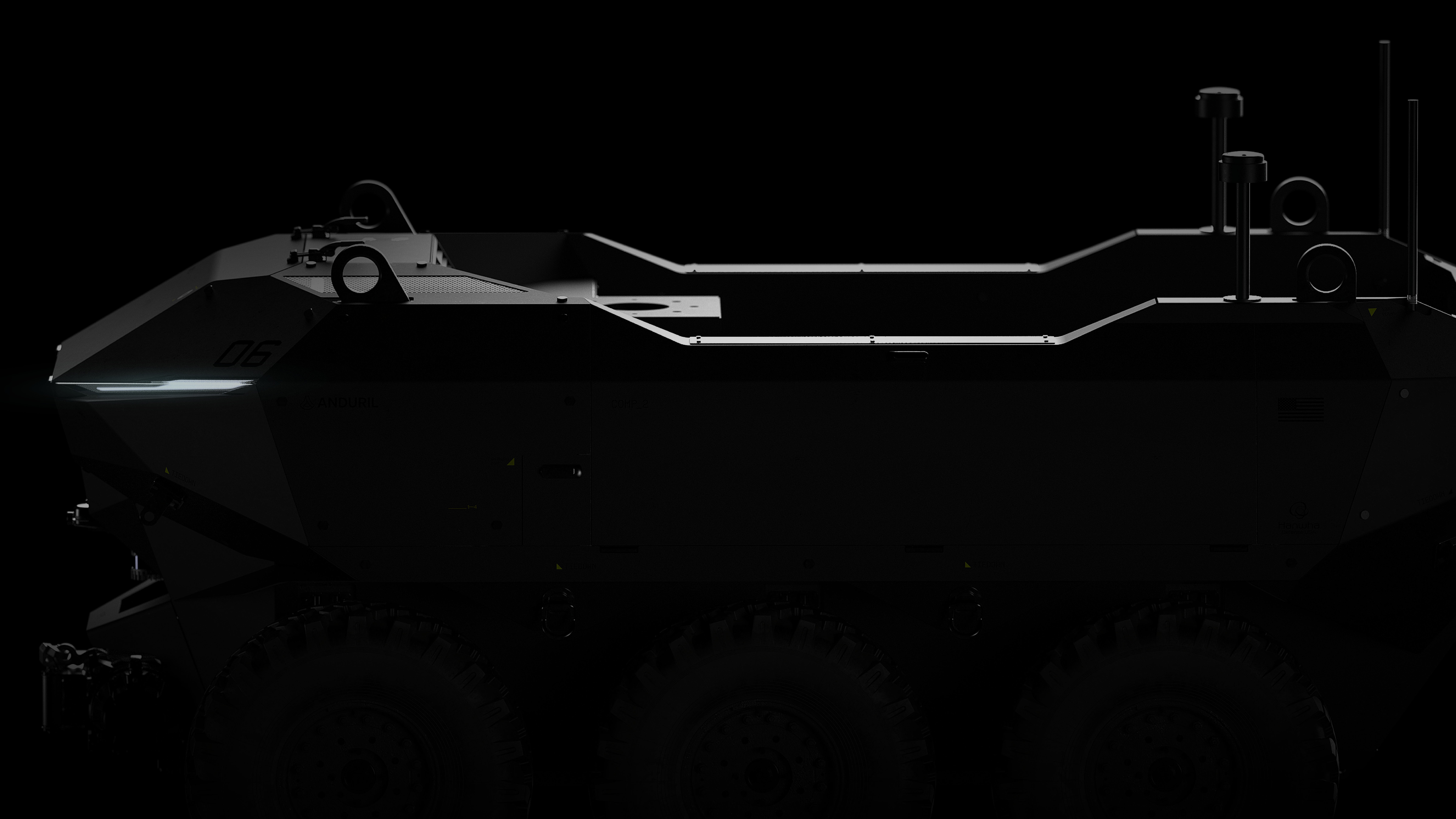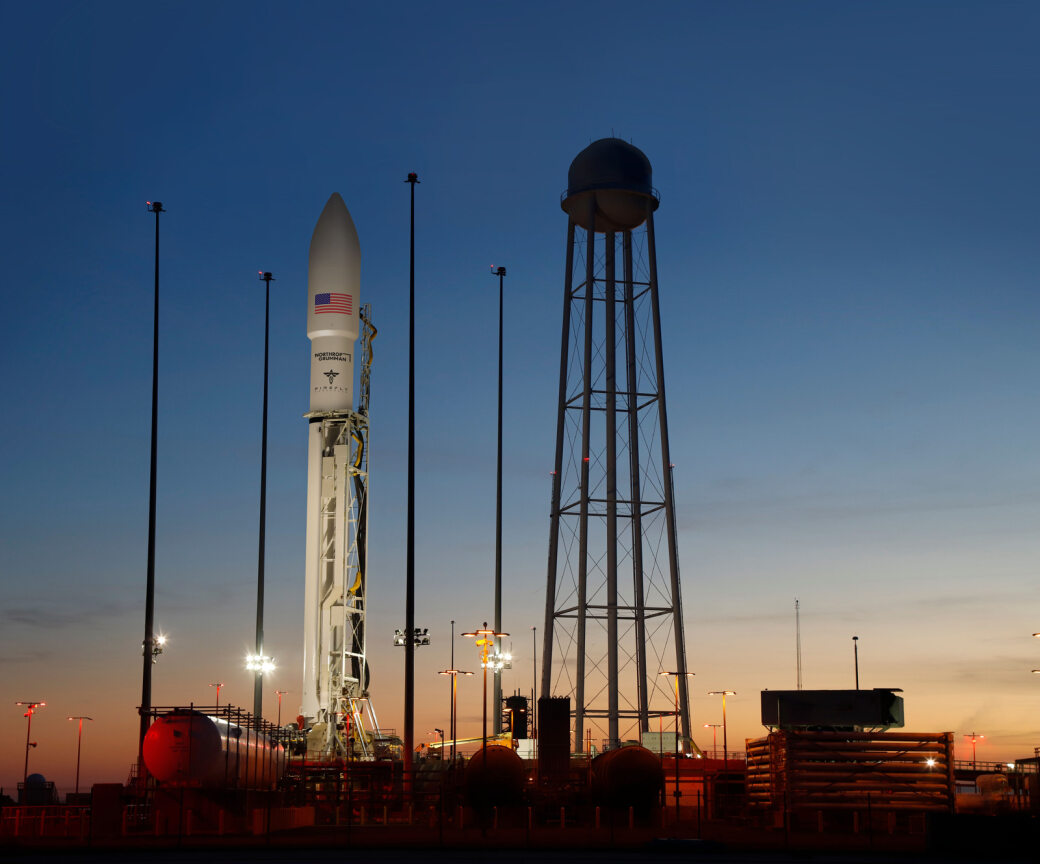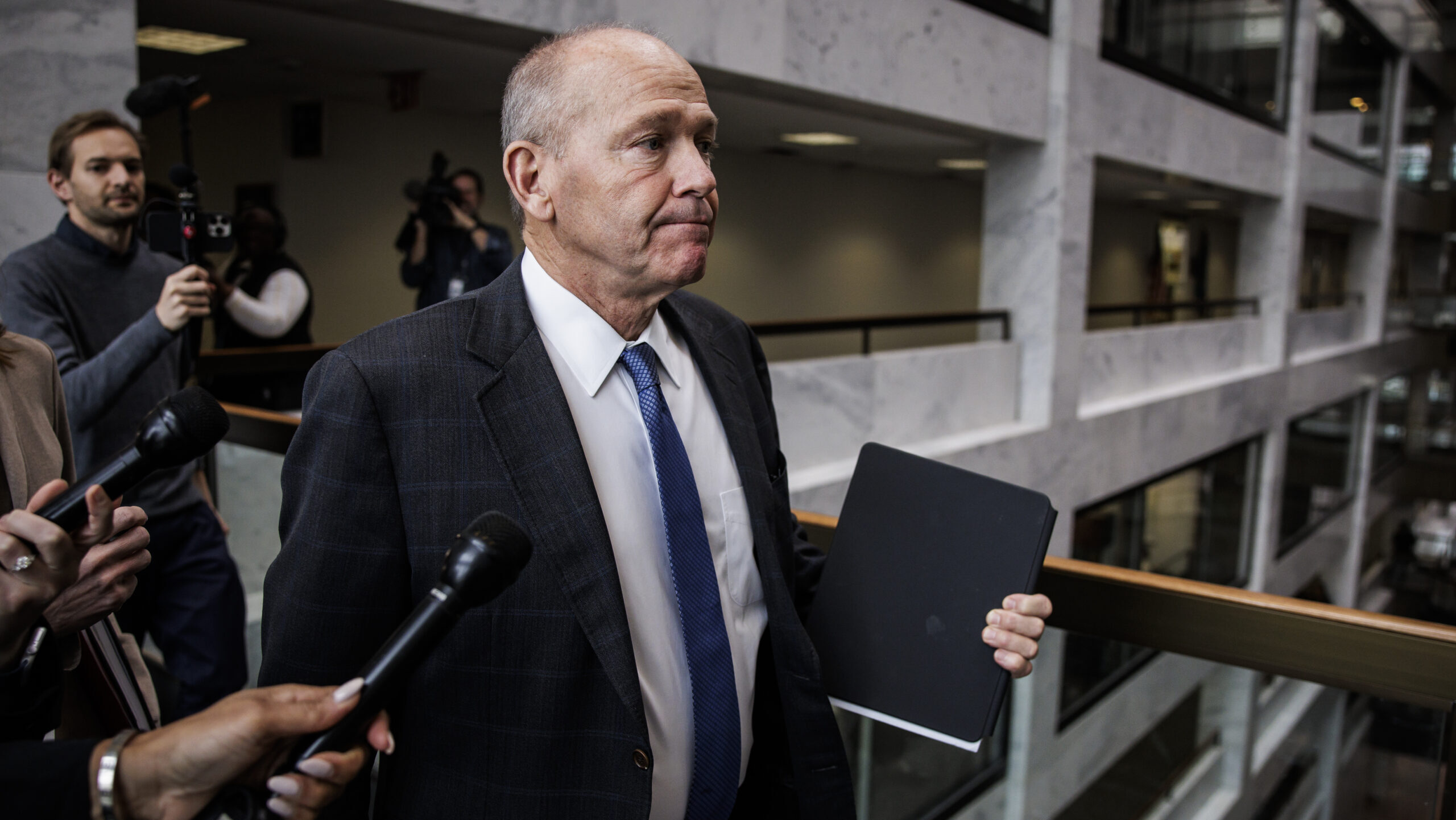
An image provided by Anduril showing a Anduril-Hanwha S-MET design shrouded in shadow. (Anduril)
WASHINGTON — US-based tech firm Anduril is teaming with a subsidiary of South Korean defense giant Hanwha to compete for the right to build the US Army’s Small Multipurpose Equipment Transport (S–MET) Increment II program, the companies announced today.
The US firm will “serve as the prime contractor to deliver a modified, autonomy-ready Uncrewed Ground Vehicle (UGV) based on Hanwha’s proven Arion-SMET platform,” according to an Anduril press release. Forterra, formerly known as RRAI, will serve as a sub-tier supplier, bringing autonomous capabilities to the system.
For Anduril, it’s a major play to grow its land systems portfolio. For Hanwha, it represents a potential breakthrough into US military programs through its US subsidiary Hanwha Defense USA, as the Korean firm makes an ongoing global push for military exports.
RELATED: How South Korea’s defense industry transformed itself into a global player
Under S-MET, the Army wants 675 robots delivered by October of this year. The robots are designed to follow alongside soldiers for over 60 miles in 72 hours, while carrying up to 1,000 pounds of supplies and spare gear. The Army expects they can also provide troops with external power for recharging hardware, like night vision goggles or radios.
While other competitors have not been announced, it is believed that General Dynamics, Teledyne FLIR, Rheinmetall and HDT Global are all considering entry into the competition.
In a September interview with Breaking Defense, Anduril founder Palmer Luckey was open about his desire to compete across all domains, including land, for Pentagon contracts. “The only way that we’re going to get to the scale of a prime that can change the way a lot of things are done is to work across the same domains that a prime has to do.,” he said then. “You have to fight and win across multiple areas.”
Likewise, in October, Breaking Defense spoke with Hanwha Defense USA CEO John Kelly, who described that company’s 10-year plan to charge into the American land systems market.
The company’s strategy is “very much about being a prime contractor that can compete with the other peers that are here. And how do you get there? It’s about partnerships. It’s about organic growth,” he said then.
Updated 2/29/24 at 2:33 PM eastern to clarify Forterra’s role.












